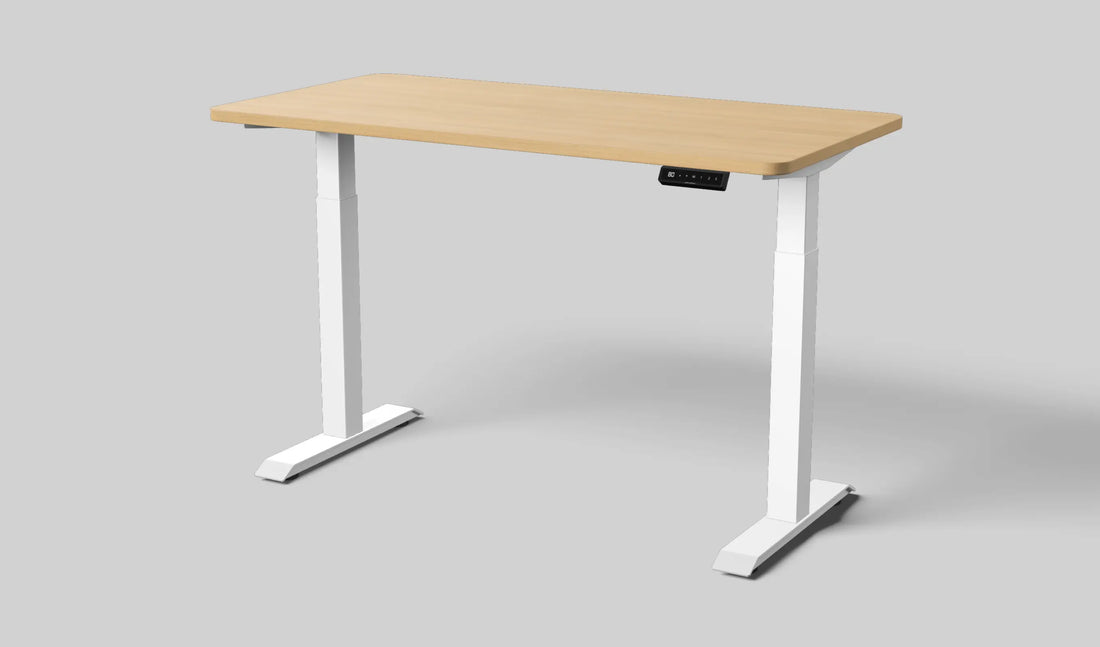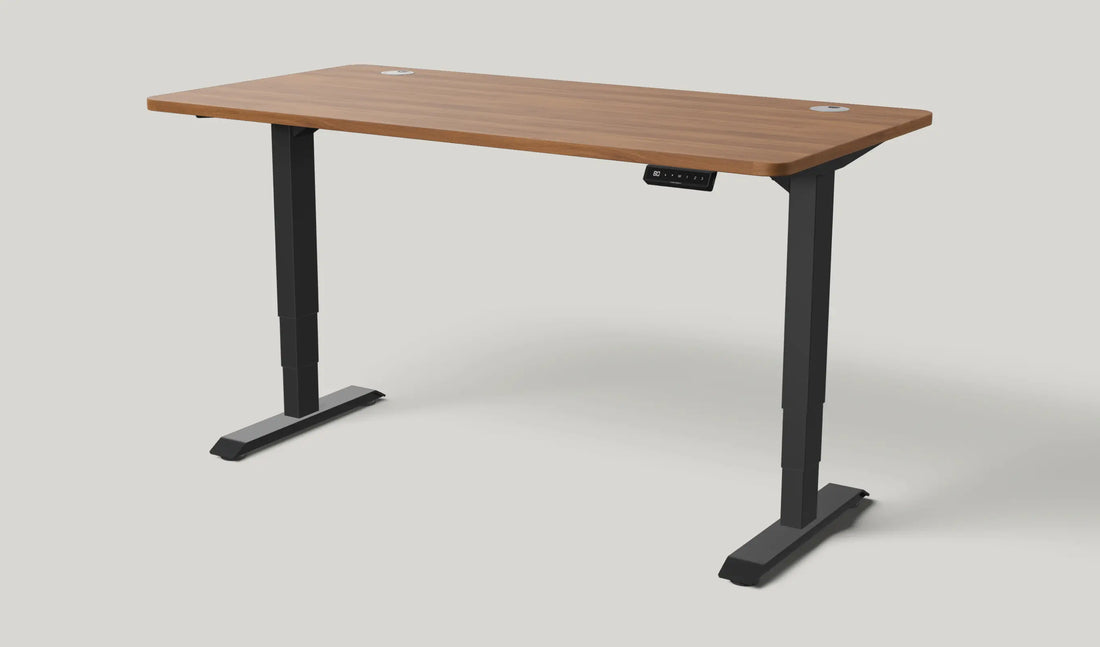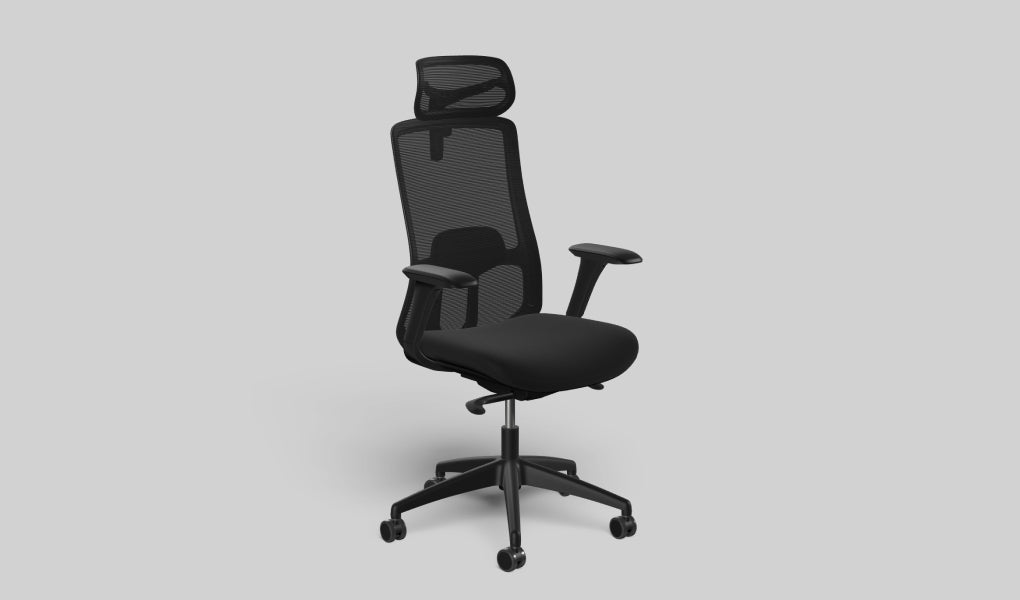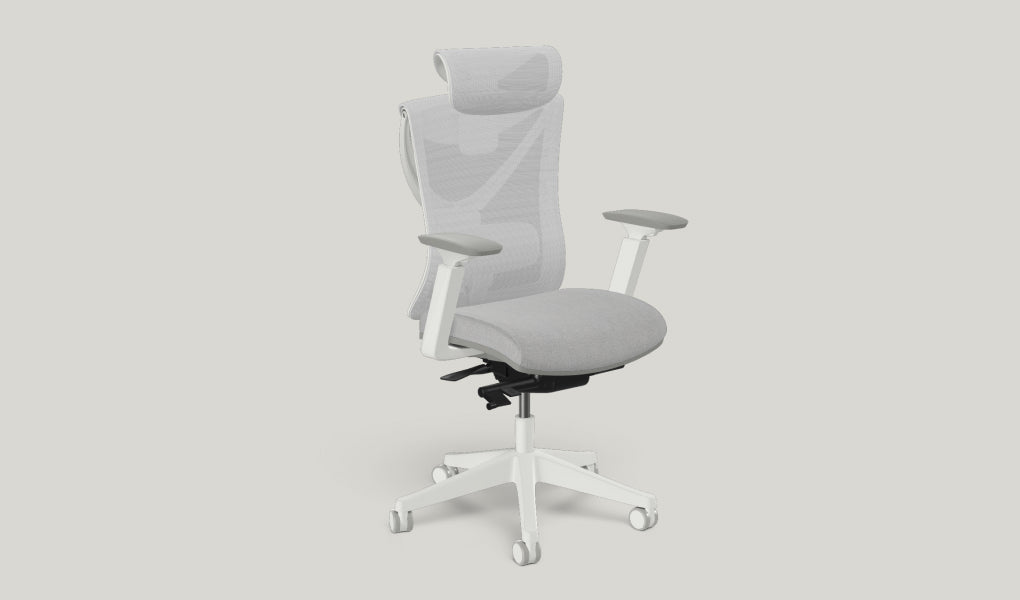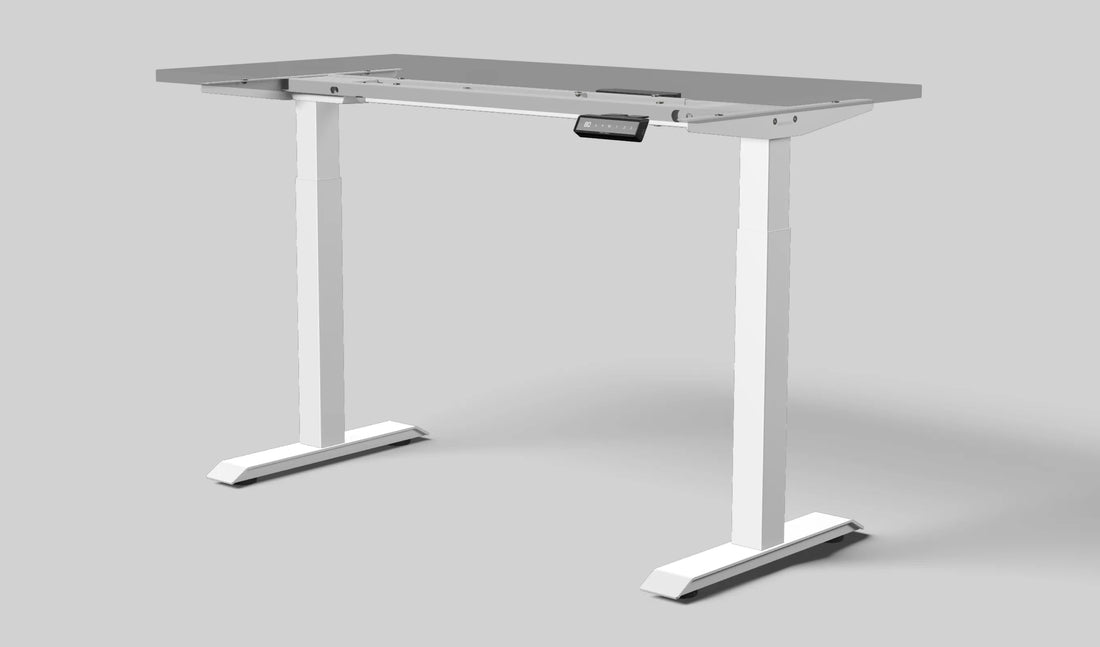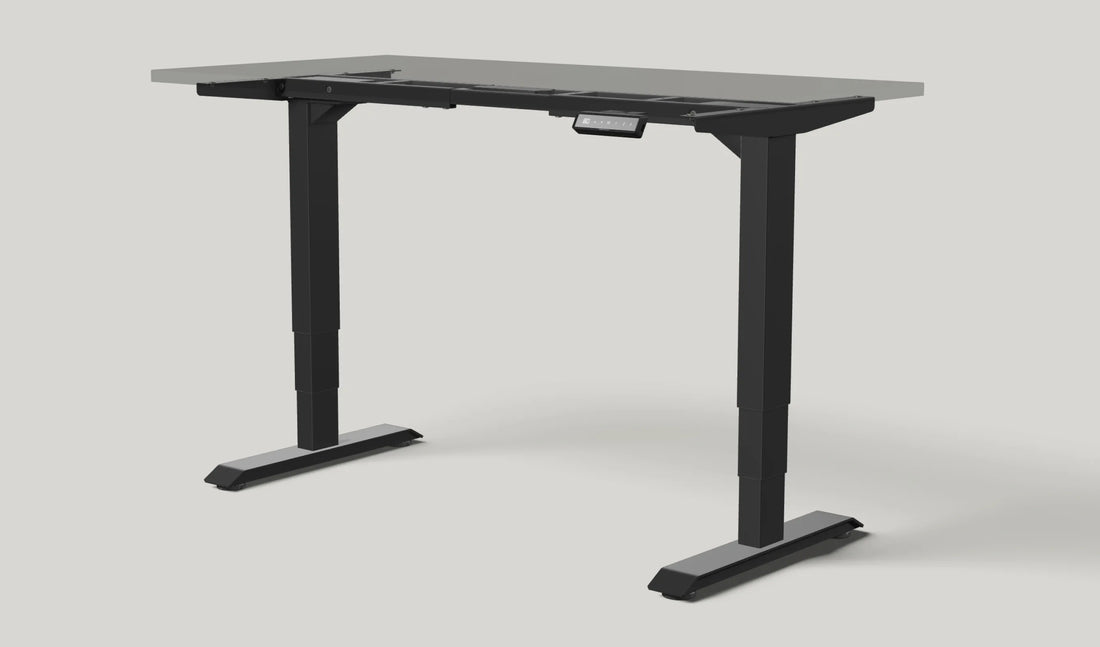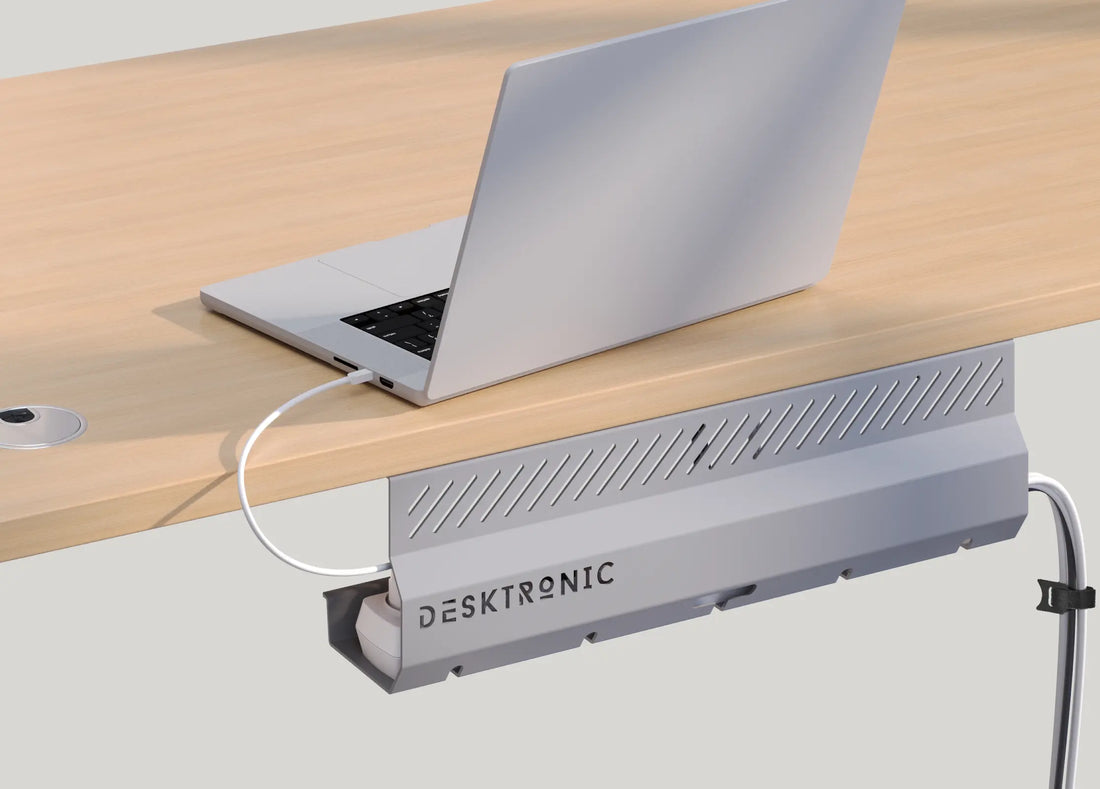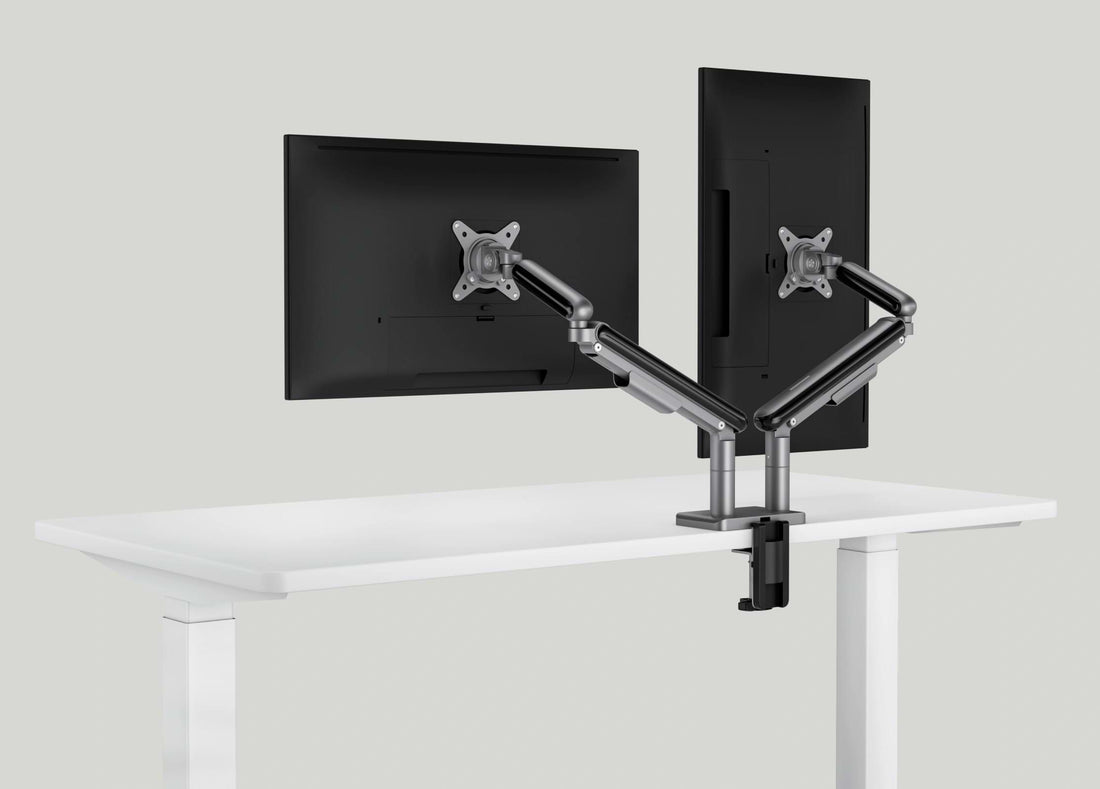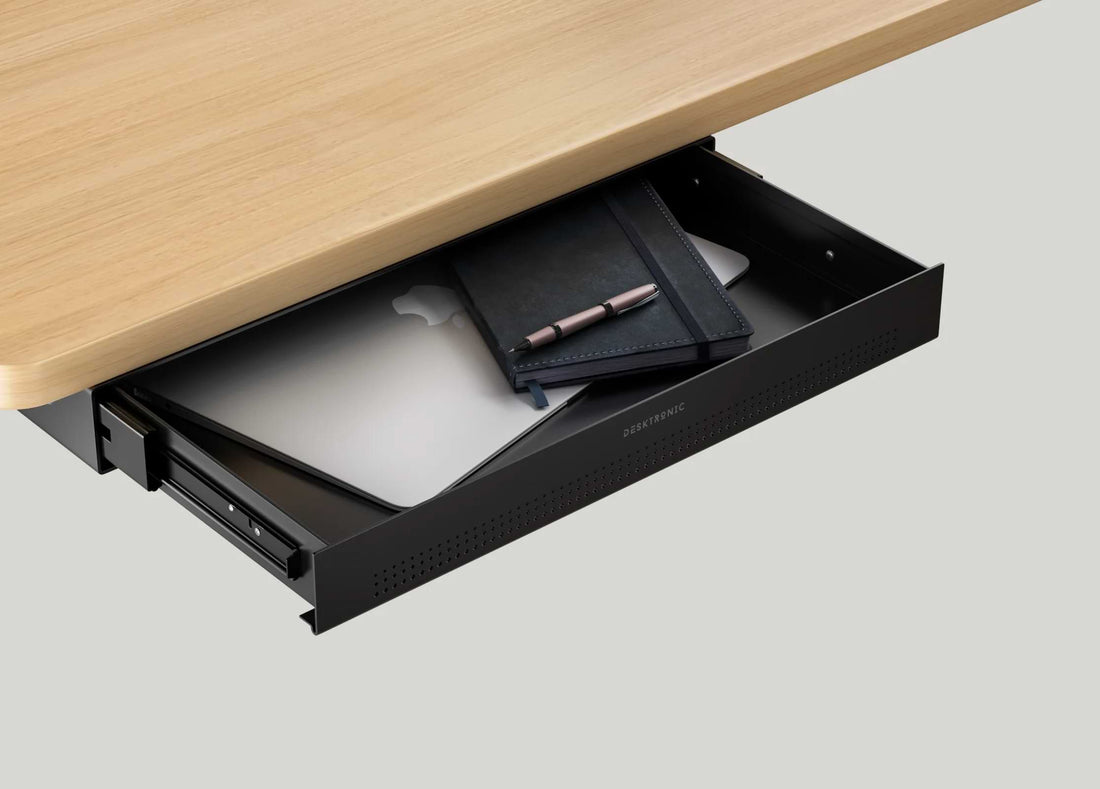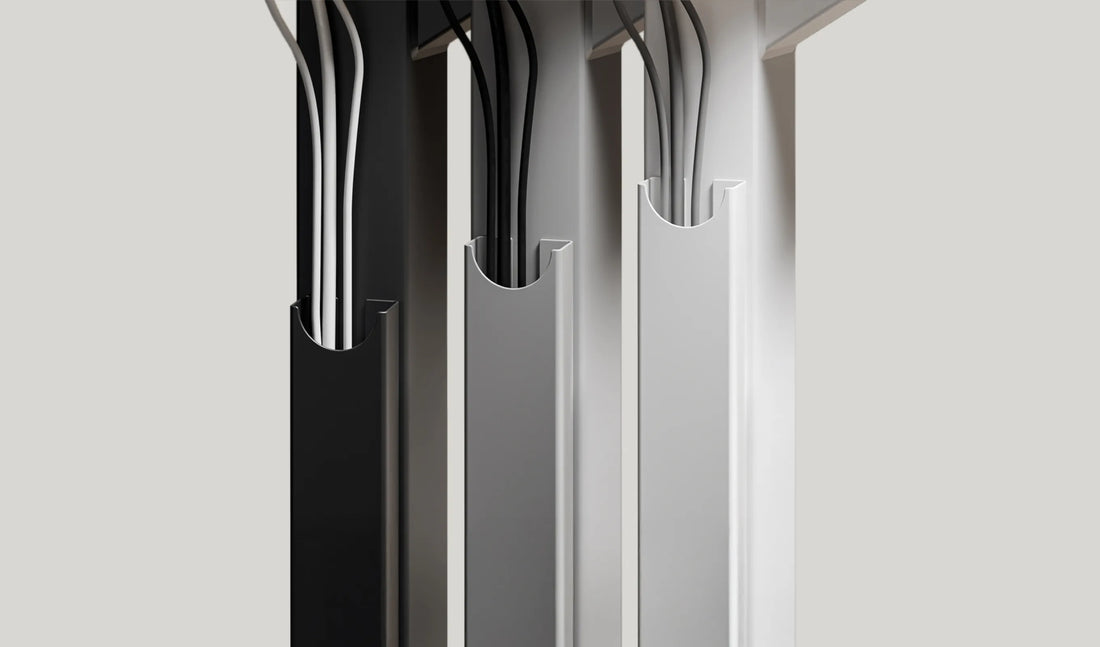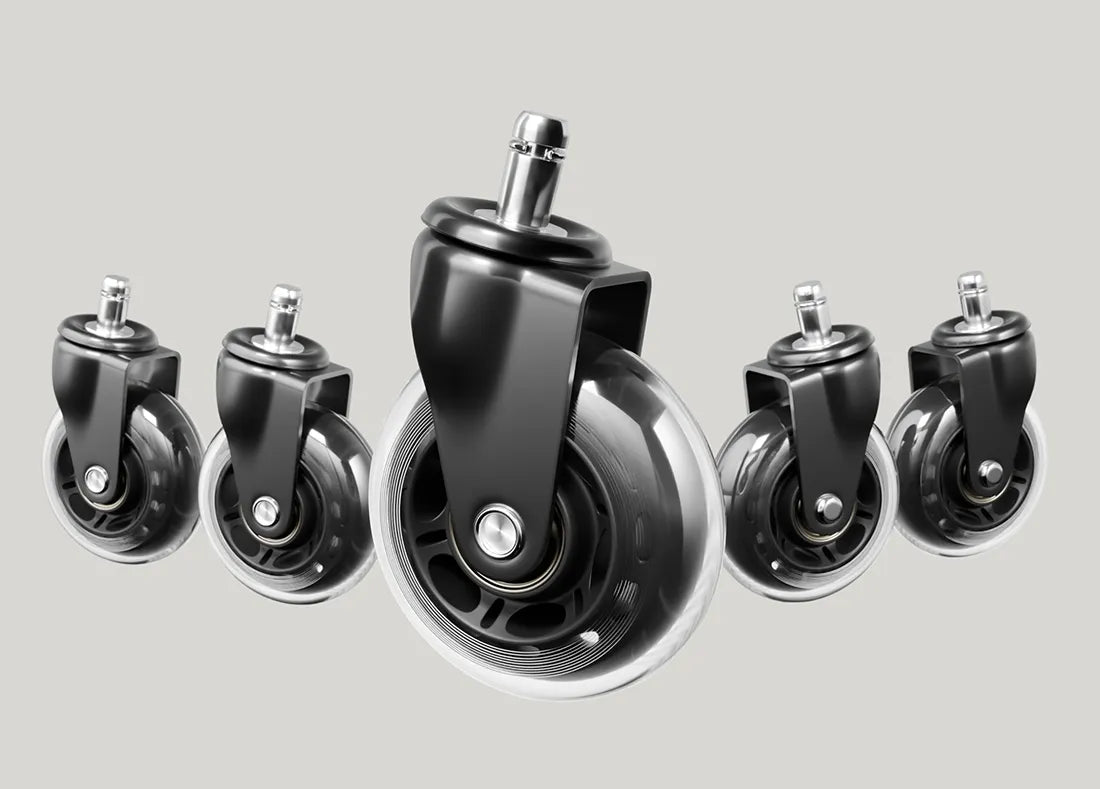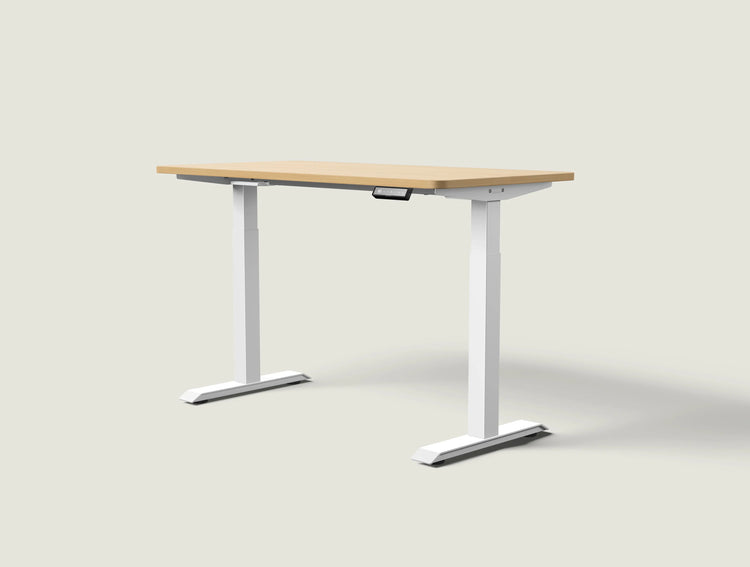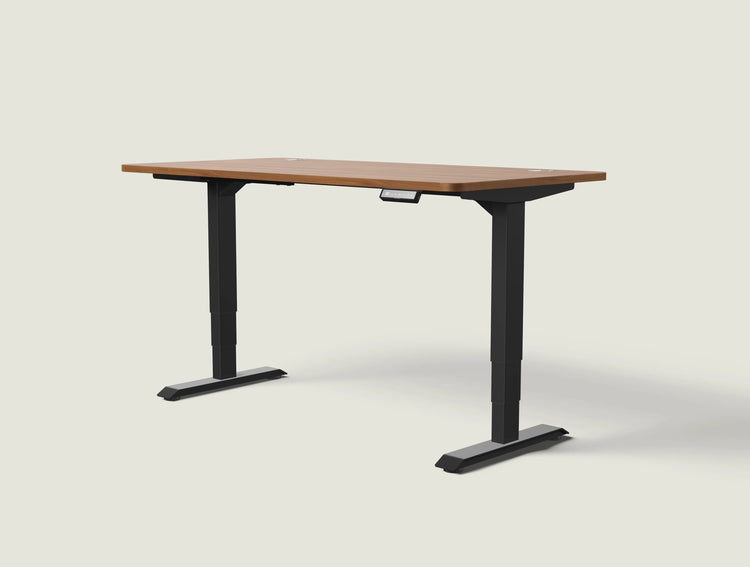Key Points
- Standing desks encourage movement and reduce time spent sitting.
- Research shows benefits for posture, back health, and concentration.
- We highlight evidence-based advantages supported by medical experts.
Benefits of Standing Desk vs Sitting
According to the NHS guidance on physical activity, sitting for long periods slows metabolism and affects how the body regulates blood sugar, blood pressure, and fat levels. This can increase the risk of obesity, type 2 diabetes, and heart disease.
Research from UK universities, shows that switching to a sit-stand setup can reduce sitting time by more than an hour each day. Participants reported feeling more alert, less fatigued, and more engaged at work. It’s not about standing all day but finding a comfortable rhythm between sitting, standing, and moving.
Stand Taller with Better Posture and Core Strength
Standing encourages light movement and engages your core muscles, supporting the spine’s natural curve. Over time, this improves posture and reduces shoulder and neck tension. Many users also notice they breathe more easily and feel balanced throughout the day.
Ease Back Pain and Body Strain
Back pain is one of the most common challenges of desk work. Standing for part of the day helps relieve pressure on the lower back and hips. Health professionals, including those at the Royal College of General Practitioners, note that using standing desks during long work sessions reduces stiffness and keeps energy levels higher – supporting long-term comfort and well-being.
Feel More Energised and Focused
Standing improves blood flow, which helps oxygen reach the brain more efficiently. A BBC Health report found that NHS workers using standing desks felt less tired and more focused after just a few months. Many also reported feeling happier and more engaged during the workday.
Support Blood Sugar Levels and Circulation
Research from Harvard Health shows that standing after meals helps the body stabilise blood sugar more quickly. Combined with short walking breaks, standing throughout the day promotes healthy circulation and energy balance – key for long-term heart and metabolic health.
Long-Term Health and Everyday Movement
Standing desks encourage light, consistent activity throughout the workday. Small movements, like standing during phone calls or walking to a colleague’s desk, help reduce fatigue and keep you more alert. Over time, these simple habits can make a real difference to your health and productivity.
Final Thoughts
Standing all day isn’t the goal, balanced movement is. Experts recommend alternating between sitting, standing, and walking to keep both body and mind active. A standing desk is not a cure for every posture or comfort issue, but it’s a valuable tool that helps reduce many of them.
At Desktronic, our range of height-adjustable desks makes it easier to move naturally and stay productive throughout your workday. For more insights on healthy working habits, explore our Ergonomics Guide.
Tip: Try standing for 30-45 minutes every hour, or set a reminder to switch positions regularly. Small steps can have a big impact on your comfort and well-being.









